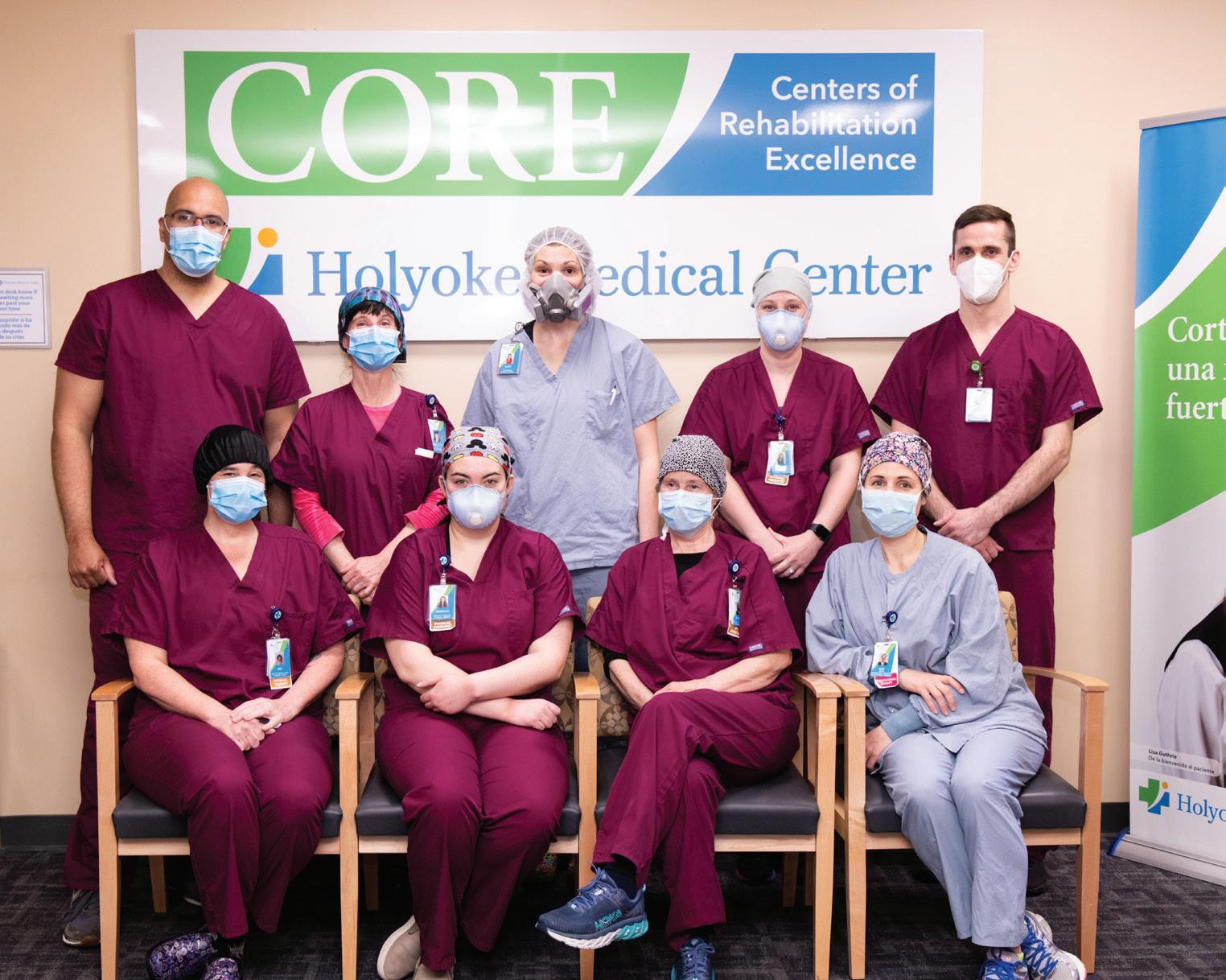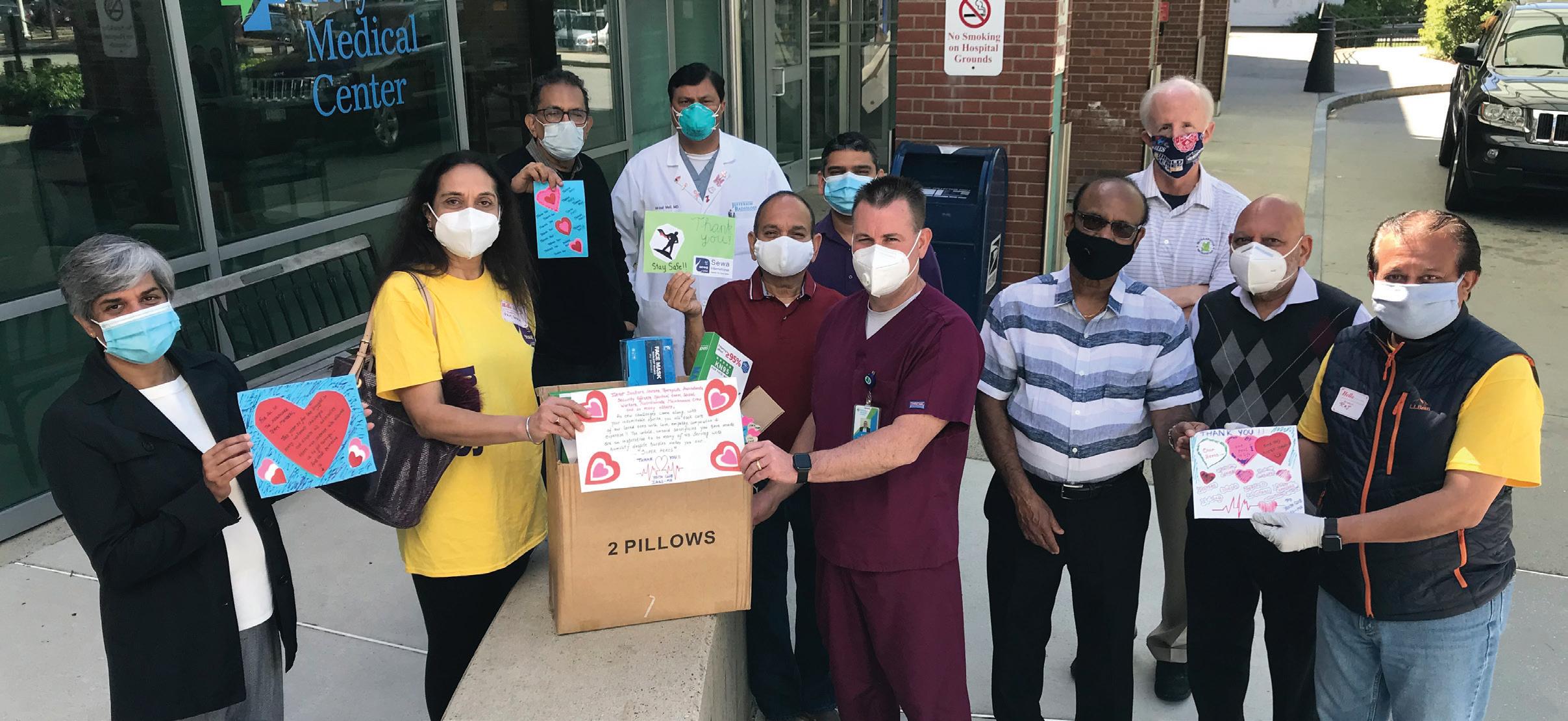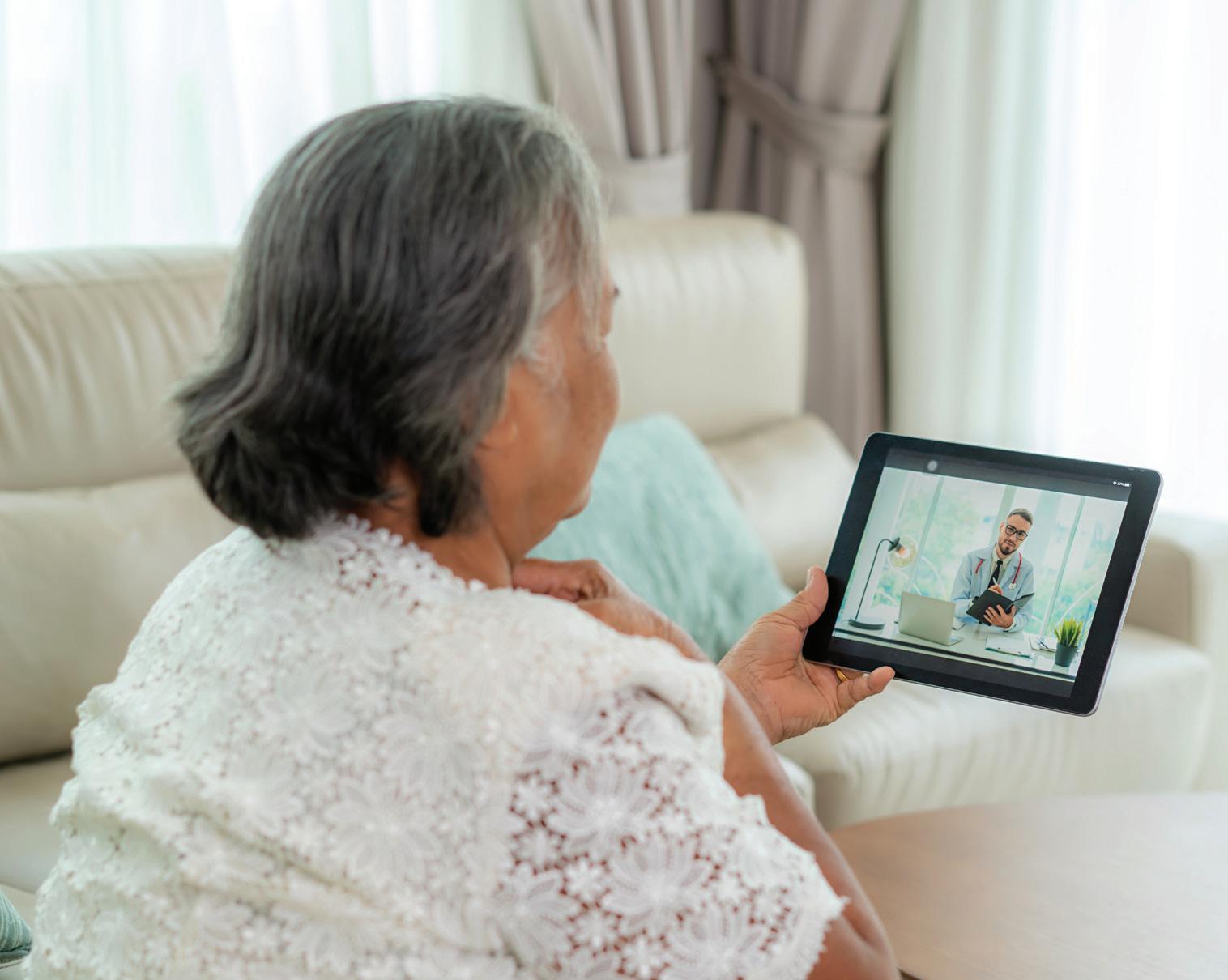
4 minute read
STEPPING UP TO CARE FOR VETERANS When the state asked
STEPPING UP TO CARE FOR VETERANS
WHEN THE STATE ASKED HOLYOKE MEDICAL CENTER TO TAKE IN RESIDENTS OF THE SOLDIERS’ HOME DURING THE PANDEMIC, ROOMS AND CARE WERE ARRANGED IN A MATTER OF HOURS.
SOME OF THE FIRST AREA residents to be personally impacted by the COVID-19 crisis were the veterans at the Soldiers’ Home in Holyoke, where a significant outbreak occurred. “We had heard that there was an outbreak at the Soldiers’ Home,” says Spiros Hatiras, President and CEO of Holyoke Medical Center and Valley Health Systems. “Then, around 7:30 a.m. on Friday, April 3, I received a call from Dan Tsai at the Executive Office of Health and Human Services. He said they were trying to relocate some residents out of the Soldiers’ Home to curb the outbreak and really needed our help.”
Hatiras considered the most pressing challenge—where to put approximately 40 residents the state hoped the hospital could accommodate. He thought of two areas that could possibly work: an outpatient cardiac services unit, and the maternity unit, which has had declining volume for several years. Hatiras immediately checked with Colleen Desai, Chief Nursing Officer, and Carl Cameron, Chief Operations Officer. “I asked them, ‘Is
Some family members of Edward Sheehan (front), including his daughter Mary Christensen (far left), were overjoyed to see their father/ grandfather/great grandfather at the first family visitation offered on May 2, 2020.
it feasible, and how quickly can we get it done?” recalls Hatiras. “By the time I got to work at 8:30 a.m., they’d already started the process.”
RAPID RESPONSE Holyoke Medical Center staff quickly came together to make the two areas ready for residents of the Soldiers’ Home. The task included moving out all outpatient furniture, cleaning units thoroughly, installing beds and medical equipment, and bringing in patient-care supplies. By 1:30 p.m., the repurposed units were ready.
“We had a steady stream of Soldiers’ Home residents arriving until around 11:30 p.m. that night,” says Hatiras. “Staff stayed on after their shifts to welcome residents. They hung flags and welcome signs and were there to greet residents. It was cold, so they had blankets to wrap the veterans in as soon as they got off the bus.”
NEW PATIENTS BRING NEW ROLES Physical and Occupational Therapy (PT/OT) is just one of the teams that took on—and excelled at—a new assignment during the pandemic. On Thursday, April 2, nearly all outpatient PT/OT clinics were closed and the staff furloughed. On Monday, April 6, many were called back to work in the hospital with Soldiers’ Home residents, some of whom were COVID-19 positive. “The job was completely different from outpatient PT/OT,” says Josh Mull, PT Supervisor at Holyoke Medical Center. “We were in totally new territory in the midst of a pandemic.” Nonetheless, the team dug in and got to work determining what needed to be done to provide the best care possible. “People were referring to us as family liaisons, but it Josh Mull, PT was a lot more
PT/OT team members were recalled from furlough to be Veteran Liaisons. Standing: Joel, Kelly, Sara, Abbie, Josh. Sitting: Amy, Rebecca, Roberta, Elin. Not Pictured: Michelle, Kaitlin, Kyle, Jeff, Becky, Melissa, Karen.

than that,” says Mull. “We had a much closer connection. PT/OTs would tell me, ‘I’ve been with that resident so much, I feel like he’s a part of my family.’”
Overall, the experience has been both very challenging and very rewarding. “Of course, the health of some residents declined, and some passed away,” says Mull. “That was very sad for all of us. But other residents saw great improvements with our care.”
For example, the PT/OTs helped many residents improve their mobility, getting them up and walking again. For other residents, they were able to resolve chronic skin issues. Some made improvements in mood and sociability.
THANKFUL FAMILIES For Mull, another rewarding part of this experience was the gratitude of families. “Whenever I’ve had the opportunity to give a family member an update, they’ve been extremely thankful,” he says. “They appreciate our taking time to keep them in the loop. All the positive feedback from families went a long way to encouraging us and the nurses and other staff who were caring for the residents.”
“When this all happened,” says Mary Christensen, whose father, Edward Sheehan, came from the Soldiers’ Home to be cared for at Holyoke Medical Center, “it was a God send. We were so comforted to know that every day someone was watching him, making sure he was eating and taking his medications. Not only that, but reading with him, looking at family photos with him and making sure he could connect with us using an iPad or phone.”
Families had an email address where they could send questions that came up, and they received daily—sometimes twice daily—updates from PT/OTs, nurses and other members of the team.
“Several times, I even heard directly from Spiros, the head of the hospital,” says Mary. “Our family is so grateful that our father has been treated with such respect and dignity, every single day. I can’t say enough about how appreciative we are.”
“This felt like a call of duty for us,” says Hatiras. “One that we knew we had to answer. We overcame a lot of barriers and a lot of work went into it. In the end, we’re very gratified that we were able to help.”






